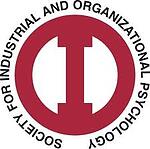
Extensive research highlights the importance of work engagement – employees’ morale and involvement with work – as determinant of individual and organizational performance. Large-scale studies show that engagement is positively correlated with a wide range of important business outcomes, such as organizational commitment, citizenship, innovation, and team performance, and negatively correlated with turnover intentions, strain, and burnout (Maslach, Schaufeli, & Leiter, 2001; Seibert, Wang, & Courtright, 2011). Furthermore, meta-analytic evidence indicates that higher engagement levels are directly translated into higher business revenues and profits (Harter et al, 2009). These findings have prompted organizations to monitor engagement levels via regular employee surveys. According to Gallup, who surveys millions of employees every year, only 30% of Americans are engaged at work, and the most common reason for disengagement is employees’ direct boss or line manager. Thus leadership is a critical antecedent of engagement (Wollard & Shuck, 2011).
Leadership is typically defined as the ability to build and maintain high-performing teams (Hogan, 2007). As engagement is a key driver of individual-, team-, and unit-level performance, it has been argued that leaders influence organizational effectiveness by engaging employees, or failing to do so (Schaufeli & Salanova, 2007). Meta-analyses suggest that leadership effectiveness increases employees’ job satisfaction and commitment (Dumdum, Lowe, & Avolio, 2002; Fuller, Patterson, Hester, & Stringer, 1996; Lowe, Kroeck, & Sivasubramaniam, 1996), while independent studies report strong correlations between transformational leadership and employee engagement (Zhu, Avolio, & Walumbwa, 2009), where engagement mediates the relationship between transformational leadership and subordinates’ turnover intentions (Wefaltd et al, 2011). Although these findings support the idea that leadership is a major cause of employee engagement, an important unaddressed questions remains, namely what causes performance differences in leadership?
To this end, this symposium includes four integrated presentations that highlight the role of leaders’ personality as determinant of subordinates’ engagement levels and discuss how this knowledge can be translated into actionable organizational recommendations.
First, SIOP Fellow Robert Hogan, who pioneered the use of personality assessments in organizational settings, presents a causal model for understanding the relationship between personality, leadership, and engagement. This model posits that personality characteristics drive individual differences in leadership effectiveness because they impact on employee engagement.
Then, Justin Black, Strategic Advisor at Sirota Survey Intelligence, puts Hogan’s model to the test by examining longitudinal effects of managers’ personality on their direct reports’ engagement in a multinational technology firm. Results highlight causal paths between managers’ reputation – how others’ evaluate them – and subordinates’ engagement: prudent and empathic managers engage; passive-aggressive and volatile managers disengage.
Next, Christine Fernandez, Director of Organizational Effectiveness at Starwood, discusses linkages between CEO’s competencies, employee engagement, and customer satisfaction in 398 worldwide hotels. Results show strong associations between CEOs interpersonal skills, multisource feedback, employee engagement, and guest loyalty, as well as providing a detailed account on the personality of successful hotel CEOs.
The final presentation, by Tomas Chamorro-Premuzic, Professor of I-O Psychology at University College London and VP of Innovation at Hogan, examines the role of managers’ and employees’ emotional intelligence as determinant of employee engagement and job performance in a large retail chain, integrating both top-down and bottom-up perspectives on engagement.
This symposium will be held Thursday, May 15.
References available


 If you're attending the
If you're attending the 